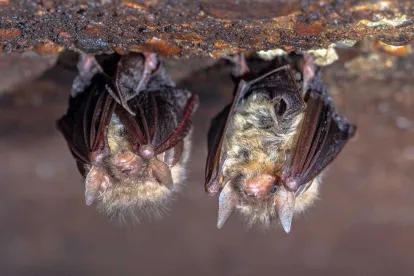The U.S. Fish and Wildlife Service (the “Service”) published a proposed rule listing the tricolored bat as an endangered species under the Endangered Species Act (“ESA”). The tricolored bat occurs in portions of 39 states, including Texas, Iowa, and Oklahoma, which contain a significant concentration of utility-scale wind projects. In combination with the Service’s proposed “endangered” designation for the northern long-eared bat, the new proposed rule could complicate wind energy project permitting across the country.
The tricolored bat is among the smallest bats in eastern North America and is distinguished by its tricolored fur. According to the species status assessment (“SSA”) prepared by the Service for the tricolored bat, the primary factor influencing the species’ viability is white-nosed syndrome. This disease is caused by a fungal pathogen and causes physiological and behavioral processes often leading to mortality.
Wind energy-related morality is another factor impacting tricolored bat viability. According to the Service, tricolored bats are killed at wind energy projects primarily through collisions with moving turbine blades. The Service notes that as the wind energy risk index has increased, the predicted relative abundance of the tricolored bat has decreased. In other words, as wind energy projects have increased in size, number, or distribution, tricolored bat survey counts declined.
While the Service proposes listing the tricolored bat as “endangered,” it does not propose listing any critical habitat for the species. The Service determined that forested habitat loss is not a major driver of the species’ status, and suitable forest habitat is not limiting for tricolored bat now nor is it likely to be limiting in the future. Additionally, the Service determined that identifying wintering tricolored bat habitat on published maps for the tricolored bat would likely increase the existing threat from human entry to bat habitat and could increase the spread of white-nosed syndrome by identifying specific sensitive areas.
If the Service’s proposed rule is adopted, permitting for wind energy projects posing some risk of “take” to tricolored bats could become more difficult. This follows the Service’s March 2022 proposal to change the northern long-eared bat’s listing from “threatened” to “endangered.” Taken together, the proposed new rules could elevate the risk to large wind projects under the ESA and, where applicable, make additional avoidance and mitigation measures advisable.
The Service is accepting comments on the proposed rule until November 14, 2022. In the interim, the Service will host an online public informational meeting on October 12, 2022, from 6:00 p.m. to 8:30 p.m. eastern time.




 />i
/>i

